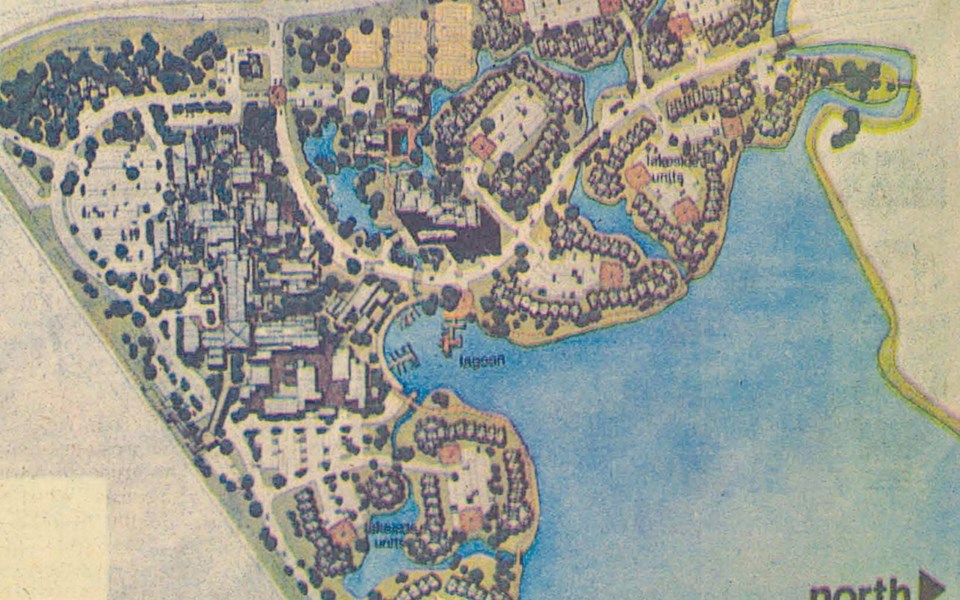With Whistler Village now firmly established at the base of Whistler Mountain it's hard to imagine the town centre anywhere else. Whistler without Eldon Beck's plans, the Village Stroll or Skier's Plaza would be a very different experience for visitors and residents.
Before the Resort Municipality of Whistler was formed in 1975 there was already talk of creating a centralized commercial centre for the area, but opinions differed on where to locate it. Both John Taylor and Norm Paterson believed the centre should be built on their own properties.
Taylor had bought the Jordan's Lodge property (now Nita Lake Lodge) and proposed building the centre near the Creekside base of Whistler Mountain. Norm Paterson and Capilano Highlands Ltd. had already developed much of Alpine Meadows and Emerald Estates and proposed building a central town site on the shores of Green Lake.
Paterson's town centre was first announced in the spring, 1969 edition of Garibaldi's Whistler News. Five years later, on Sept. 21, 1974 he and Tom Wells of Imperial Ventures shared their model with the public. From their plans it is possible to imagine a very different Whistler.
The development, called "Whistler Junction," was to be located on Green Lake, bordered on one side by Highway 99 and on another by the railway tracks. The entirety of the town centre would be located within the current site of Nicklaus North. This plan had some similarities to the village we know today. For example, it included shops, restaurants, plazas, cafes, hotels, commercial and civic buildings, and multi-dwelling residential units, all accessible by foot.
Parking would be located on the edges of the development. Some underground parking would also be located at the transportation terminal on the railway that would service both rail and bus passengers. This terminal was to be connected to the shopping and residential areas via an overhead walkway.
At their presentation the developers stressed that the natural setting would be disturbed as little as possible. Wells pointed out that "as many trees as possible would be left standing" and that "the plan is drawn around these and the other natural features."
With a lakeside location, it's no surprise that water was to feature prominently in the design. A lagoon and waterways were to be built into the site, not completely unlike the river that runs through Whistler Village. A pier would be located at the lagoon and a boardwalk would be built along the shore of the lake.
Unfortunately for Paterson and Wells, the provincial government had frozen all commercial development in Whistler in 1973, a year before they unveiled their model. In 1974 a report by James Gilmour of the Ministry of Municipal Affairs' planning services department recommended a single town centre located on the central dump and a new form of municipal government.
When the Resort Municipality of Whistler was created, the new council supported a plan to build a town centre at the recommended site of today's village. Paterson, Taylor and other members of the Whistler Development Association continued to push for their own vision but the province ultimately approved the central location we see today.




